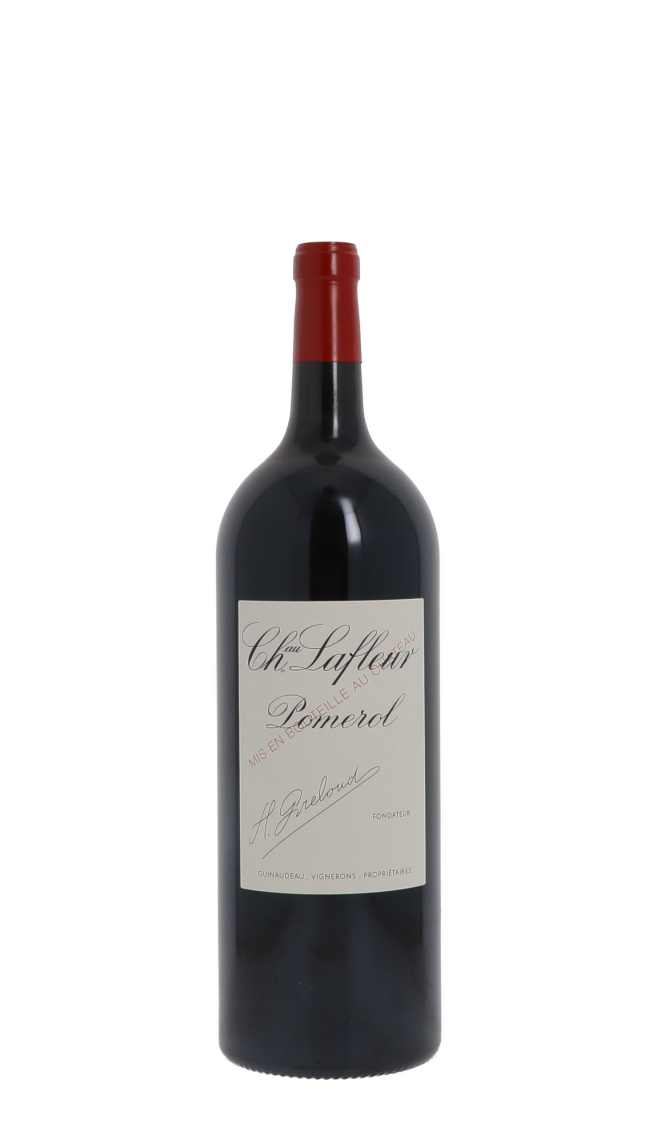Château Lafleur is a 4.5-hectare wine estate that is one of the most prestigious properties in the Pomerol appellation. Its history began in 1872 when Henri Greloud, also the owner of Château Le Gay, acquired a parcel of vines to found Lafleur. The estate has remained in the same family ever since, with the Guinaudeaus being the current descendants of the Grelouds.
After the death of André Robin, who had developed the "bouchet" (or Cabernet Franc) through massal selection in the 1930s, his daughters, Thérèse and Marie Robin, maintained traditional practices until 1984. It was then that Jacques and Sylvie Guinaudeau, great-great-grandchildren of Henri Greloud, took over. They first leased the estate before acquiring full ownership in 2002, later joined by their son Baptiste and his wife Julie.
The vineyard is located on the northern part of the Pomerol plateau. It is adjacent to Châteaux Petrus, Le Gay, Vieux Château Certan, and Hosanna.
Lafleur's terroir is composed of clay gravel to the south, southwest, and east; gravelly sands to the south; and sandy-clay gravel to the north and northwest. The grand vin of Château Lafleur comes from the most gravelly parcels, which are well-suited to Cabernet Franc. Les Pensées de Lafleur is harvested from the more clay-rich terroirs, predominantly Merlot, located in the northeast of the vineyard.
The "bouchet" grape, the local name given to the old Cabernet Franc, is the emblematic grape variety of Lafleur. The Robin sisters' decision not to replant after the devastating frost of 1956, but instead to regenerate the existing vines by cutting the upper part of the vines, preserved a very old local DNA, unlike other estates that opted for modern clones. The grand vin of Lafleur is typically composed of 53% to 60% Cabernet Franc, complemented by 40% to 47% Merlot.
Historically, no chemicals or pesticides have been used on the Château Lafleur land. Plowing was still done by animal traction until 1979. Deep clawing is performed to force the roots to seek nutrients deep down.
The vinification process at Château Lafleur is also traditional. Fermentation takes place in stainless steel and concrete tanks. This is followed by malolactic fermentation. Aging in barrels lasts between 14 and 18 months, with generally 25% new wood for the grand vin. The used barrels come from the sister estate, Château Grand Village.
The bouquet of Lafleur is characterized by scents of black fruits, truffle notes, floral nuances (peony, violet), and hints of spices (licorice, pepper). The wine is deep and full-bodied, with a fine tannic structure and a long finish. It refines considerably with age and reaches its optimal maturity between 15 and 50 years of bottle aging.
The Guinaudeau family also explores other expressions of the terroir with projects such as Les Perrières de Lafleur, a Bordeaux Supérieur made from massal selections from Château Lafleur.

![]()
![]()
![]()
![]()

